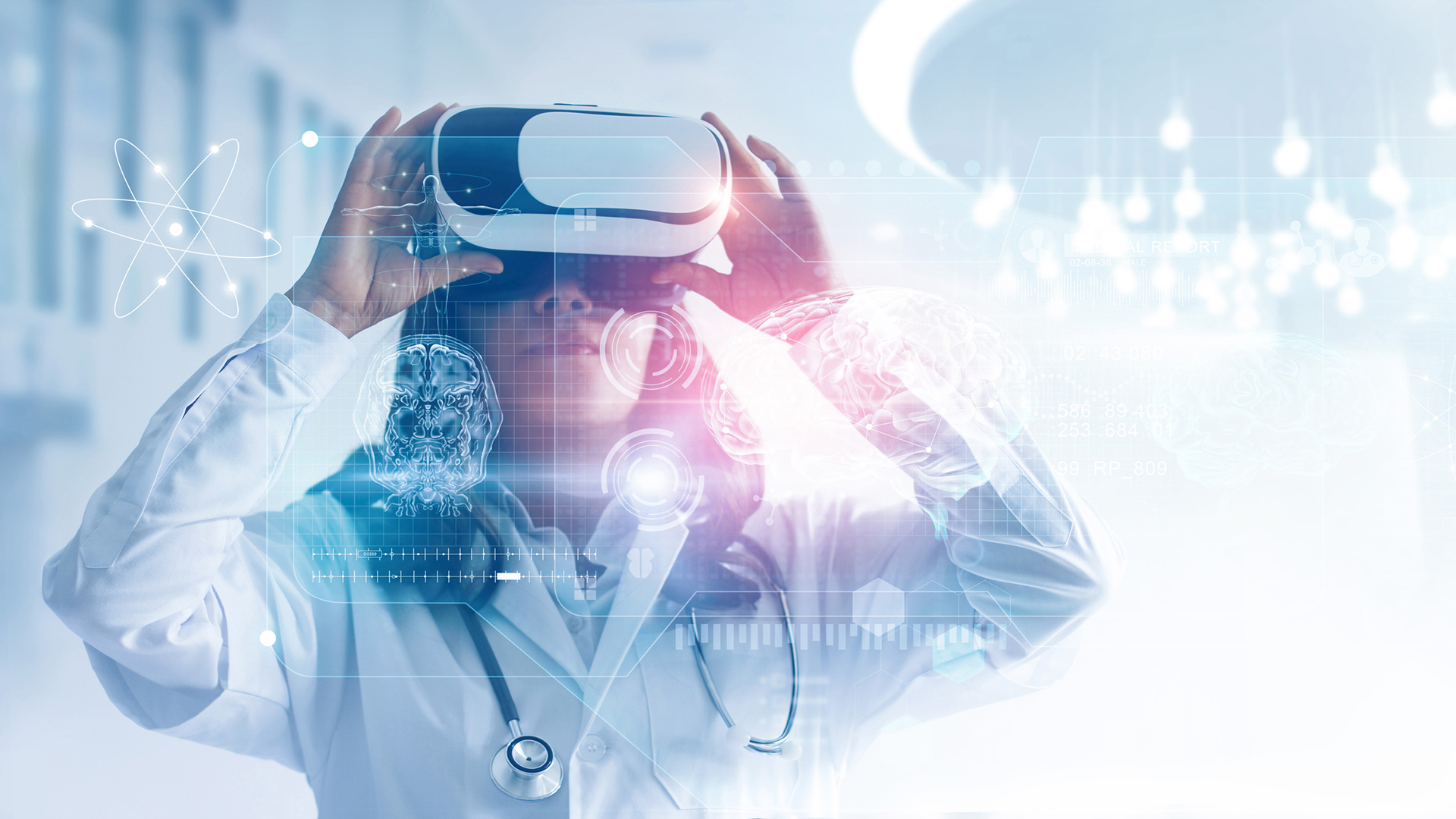The ‘patient of the future’ is driving radical innovation in healthcare

Digital data collection, utilisation of real-word data and patient-centric thinking will all contribute to the rapid development of a new healthcare landscape, says Debiopharm Innovation Fund’s Tanja Dowe.
In recent years, we have seen thinking shift from focusing on a disease’s treatment to seriously considering the wider potential for its prevention, enabled by dramatic advances in data science and supported by a pressing need to reduce healthcare costs.
Leaps forward in both digital tools and widespread collection of medical and health data have provided many opportunities for the healthcare industry to adapt and change. The advent of COVID-19 has been a great testing environment for these technologies where, for example, the adoption of telemedicine was no longer an option but an urgent need to plug the gap in face-to-face medical care.
The healthcare industry is also changing as its ‘customers’ move from ‘boomer’ patients to digital natives. These individuals no longer accept the patient role of past generations. They want to be involved, proactive contributors to their own health, with access to their own health information.
This was also one of the key messages from the recent Healthcare Automation and Digitalization Congress (AUTOMA+) 2021, at which I led a round-table discussion on the ‘prevention versus treatment’.
The traditional patient role is rapidly changing
The world over, a dramatic shift is occurring in the characteristics of the typical patient. The time of individuals relying entirely on face-to-face interaction with their doctors is long past. In its place, a new persona has emerged. The ‘patient of the future’ demands control of their own healthcare – they are proactive individuals who follow their own health status with one of the almost 400 wearable devices on the market already today, and receive personalised health improvement advice through an app. They want personalised care all across the medical care pathway as well.
We can start to understand how we, in the healthcare industry, must respond to this seismic shift by looking initially at what is driving the transformation and, in particular, at three key factors.
Firstly, there is an ever-present need to reduce healthcare costs. This was a priority for healthcare services pre-COVID and is even more critical now in order to manage the huge burden of disease as we start to re-open the world. Prevention and treatment services for non-communicable diseases (NCDs) alone have been severely disrupted since the pandemic began, and the World Health Organization predicts a long-term upsurge in deaths from NCDs in the months and years that follow. Without finding a way to make healthcare more cost-efficient, the outcomes for patients are likely to fall sharply.
Secondly, there has been an unprecedented technological drive in the last decade, accelerated by increased medical data, advances in artificial intelligence (AI) and an abundance (and increased consumerisation) of digital tools, sparked by growing market appeal – as seen with the popularisation of health apps and digital monitoring systems, for example.
Thirdly, and closely linked to the technological drive mentioned above, the patient of the future is native to this digital landscape. They haven’t had to learn how to use these tools as adults because they have grown up with the technology and it has fed into their way of learning, thinking and living their day-to-day lives. They simply will not accept an outdated health system that looks to non-technological ways of working as the primary service delivery outlet. This must be balanced with levels of user acceptance – medical personnel may need to be trained and brought up to speed on the value of these tools, without adding to their workload. Although junior doctors may be more digitally native, it is possible that there will be more widespread adoption in experienced medical professionals, because they understand the medical and patient end value better. Bearing this in mind, we must ensure we are engaging with the new generation of health professionals as much as the old.

The healthcare industry must respond with radical innovation
One way to start is with simple workflow optimisation. This can be in appointment scheduling, referrals or medication reminders. The next level is to make medical data available for research purposes through digital platforms, such as through the work of our portfolio company BC Platforms, who integrate clinical and genomic data of millions of patients globally. If you add AI assisted clinical decision support on top of this data, you can reach truly personalised healthcare with efficient and informed decisions.
On the patient-facing side, you can adopt wearable, connected devices or ePRO strategies for remote patient monitoring, to ensure the treatment team has well-documented patient information between visits, or you can delve into digital therapeutics. According to a recent study by IQVIA, there are 438 clinical studies with 933 digital biomarkers that measure patient status, and more than 20 regulatory approved digital therapeutics commercially available today. These have a sizeable impact to patients personally and in terms of driving down healthcare costs.
COVID has given an enormous boost to adoption of telemedicine and remote patient monitoring technologies. The advancements in these tools could never have been achieved so rapidly without the pandemic, which provided a ‘testing environment’ to move things forward. The most agile digital health companies were able to move with the greatest speed - our former portfolio company Kaiku developed a companion app for COVID patients for the Geneva University Hospital within the space of a few weeks. Digitalisation has become important to healthcare players and patients alike – it is a key enabler for the transformation of healthcare and there is no area of healthcare it will not affect.
One way of breaking this down is via the ‘macro-meso-micro’ model. At the macro level, governments and policy makers must make big decisions on, for example, how to regulate digital tools and ensure security needs are met. The meso level entails hospitals being brought up to date in terms of IT architecture and data storage etc. Finally, at the micro level, patients must be able and willing to access and use this data in a way that will impact their overall health positively (eg, switching from the treatment to prevention concept).
Data is the basis of healthcare’s digital transformation
Healthcare’s future rests with data, but the industry must find ways to unlock this abundance of personal data from in secure, patient-centric ways. If that can be achieved, the healthcare landscape will be able to shift even further from a treatment to a prevention paradigm. With digital connected measurements and algorithms that flag up any deviation from baseline, it won’t matter if the doctor has an off day or not - deviations from the norm will still be noticed.
It is worth highlighting that the shift from doctor-centricity to patient centricity needs to happen in the real-world hospital setting as a first step. IT architecture within hospitals and GP practices will be key to leveraging the data, for example, via aggregation of electronic health records and connecting between existing medical data and ‘wearables’. Health systems must catch up to the wider medical tech industry in order to avoid this aspect becoming a rate limiting step.
When it comes to prevention, behavioural science can be used to help future would-be patients adjust modifiable disease risk factors (weight, diet, exercise, sleep, smoking status and so on). The impact on preventing NCDs such as diabetes and cardiovascular or respiratory disease is easy to understand but impact on diseases such as cancer could also be phenomenal if this approach is successfully implemented on a large enough scale. Almost one third of cancer deaths could be prevented by avoiding smoking, according to the World Health Organization, and the World Cancer Research Fund estimates that 30-50% of all cancer cases are preventable through modifiable lifestyle factors (eg, diet, nutrition and physical activity).
We already have wearables that can conduct in-depth analysis on e.g. our heart health, and development doesn’t stop there. New types of sensors, data collation tools and digital signatures are being developed that will catch cues for potential future health issues and early diagnosis in much more complex diseases. Digital diagnostics can become a real game-changer – for example, earlier diagnosis of cancer makes it more treatable and, in many cases, curable. According to Cancer Research UK, the survival of patients with top eight cancer types is more than three times higher when diagnosed early (Stage I and II) instead of late (Stage III and IV).
Early diagnosis and prevention can also have an effect on pharmaceutical market dynamics - if we could diagnose cancer at an earlier stage at a population level, perhaps the need for drugs for metastatic cancers will diminish?
Funding radical innovation
The need for progressive tools to match the digitally native patient brings many opportunities to our sector but we will need a mixture of different players from across the healthcare value chain – from hospitals and pharma companies to government bodies and digital health start-ups. We need the whole value chain to come together and transform how healthcare works.
To achieve this, firms developing digitalisation technologies in healthcare need investors with strong vision and industry players with a partnership attitude. Debiopharm aims to incorporate these new tools and technologies through investments in and co-creation with digital health start-up companies.
We put radical innovation at the forefront of healthcare – not just by incrementally improving or digitalising what we have today, but by daring to build tools that have completely new ways of improving health and patient outcomes. For some of these, the regulatory path doesn’t yet exist or there is no clarity of reimbursement, but that doesn’t mean that the need isn’t critical.
We cannot afford the healthcare we have today much longer. We need to support the transformation of the global care system for the health of our children. For radical innovation thinking to be successful, all healthcare companies and providers must respond and adapt to the patient of the future.
About the author
 Tanja Dowe is the CEO of Debiopharm Innovation Fund, the strategic investment arm of the Swiss pharmaceutical company Debiopharm. A former entrepreneur and strategy and transaction consultant, she steers the fund to invest in start-ups with disruptive technologies that transform the pharmaceutical industry (see more on LinkedIn).
Tanja Dowe is the CEO of Debiopharm Innovation Fund, the strategic investment arm of the Swiss pharmaceutical company Debiopharm. A former entrepreneur and strategy and transaction consultant, she steers the fund to invest in start-ups with disruptive technologies that transform the pharmaceutical industry (see more on LinkedIn).
About Debiopharm’s strategic digital health fund

As Debiopharm’s strategic corporate fund, the Debiopharm Innovation Fund invests in digital health, smart data, and innovative tech start-ups. Find out more about seeking digital health start-up funding.










